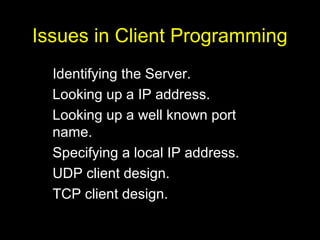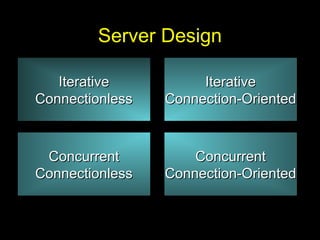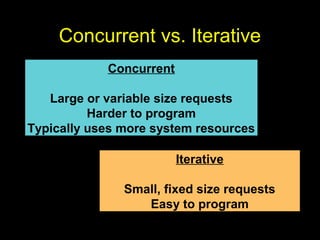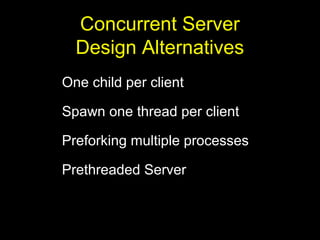This document discusses various issues in client/server programming and network server design. It covers topics like identifying servers, UDP and TCP client design, specifying local addresses, partial socket closes, concurrent vs iterative servers, and design alternatives like one process per client, preforked servers, and prethreaded servers. The best design depends on factors like expected client load, transaction sizes, and available system resources. Understanding these issues and testing alternatives is important for choosing an optimal server architecture.




























